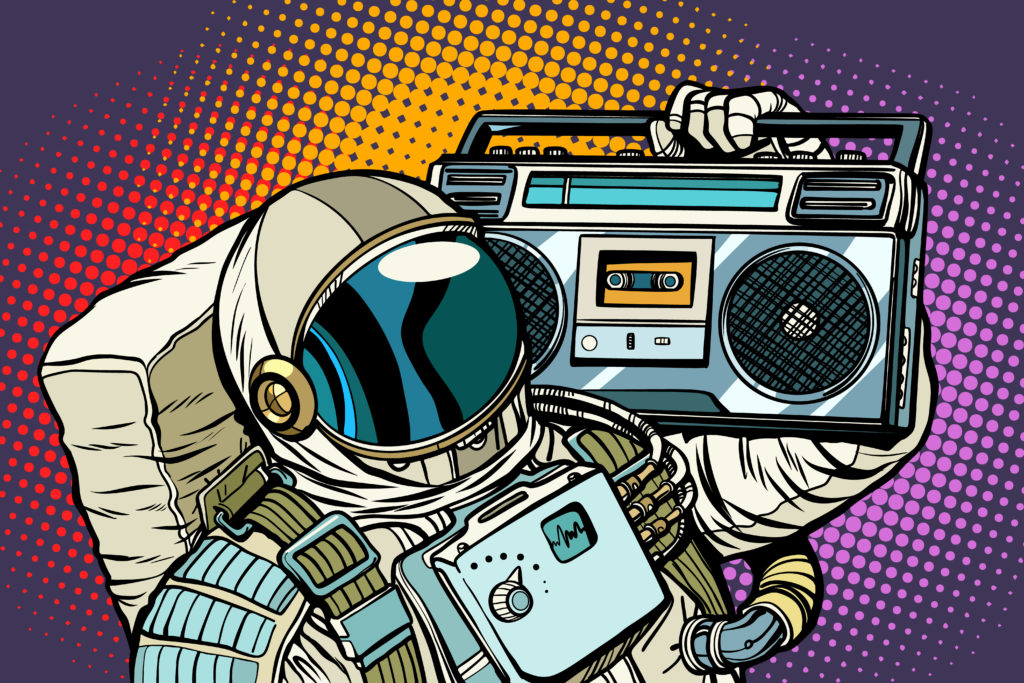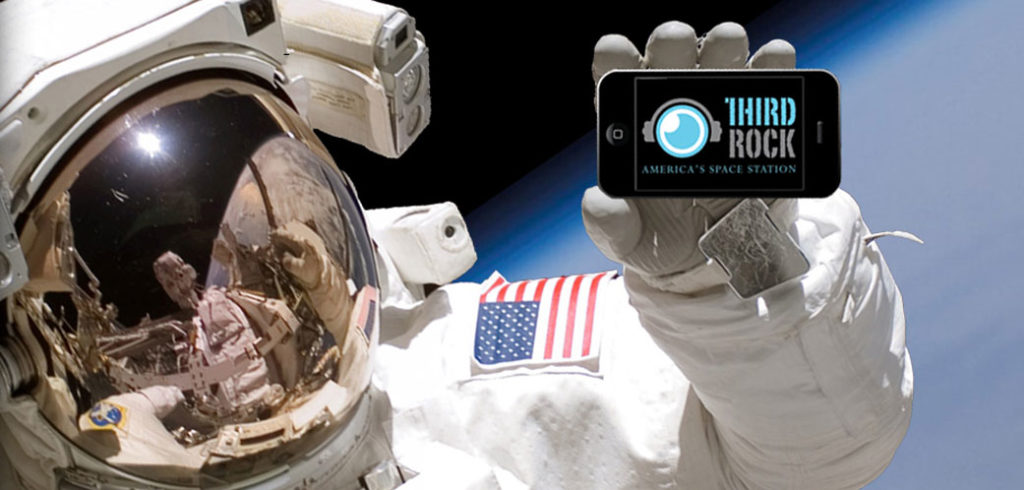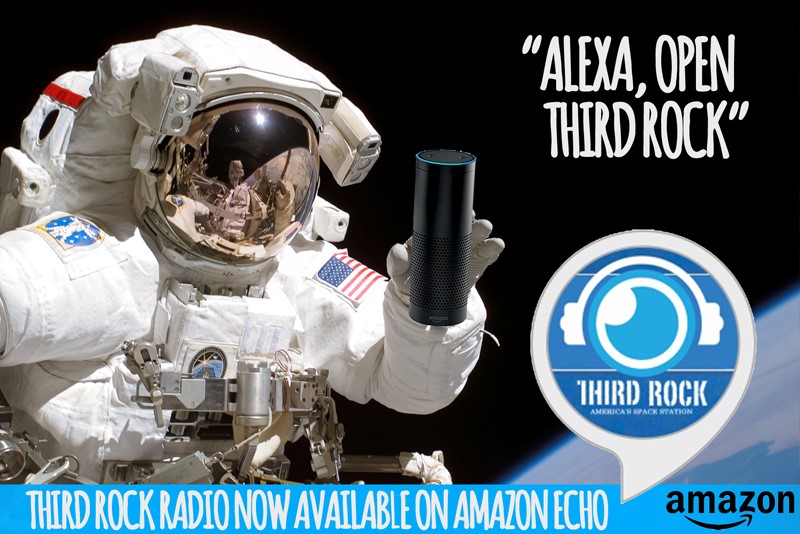
Through the decades, space exploration continues to amaze millions of us. Over the weekend, it was announced President Trump’s “Space Force” concept will become a reality – the sixth branch of our Armed Services.
And all the while, NASA have been busy, helping us gain a better understanding of the universe and our place in it. As it’s often said (not always respectfully), radio is not rocket science. And while that may, in fact, be true (colonizing Mars is infinitely more challenging than finding a hot new format in Tucson), the connections between space travel and technology and broadcast radio may be more common than you think.

First, there are former radio professionals who have made their way into NASA’s ranks. The very first traffic manager I encountered at WRIF in the 1970’s – Mark Sterling – knew he had more brain power than it took to schedule Oxy 10 commercials. He moved to Houston, got his MBA at the University of Houston, and went on to manage a $30 million Space Shuttle-based NASA research project payload.
Then, there’s Laurie Cantillo, former WABC and WTOP programmer, who joined NASA five years ago, and has risen to become Deputy Director, Communications and Education for NASA Jet Propulsion Lab.
Mark and Laurie provide hope that the sky’s the limit (sorry) for radio people who wonder whether their skill sets translate to other professions and technologies.
And that leads me to another odd connection between radio and deep space – a station that perhaps you’ve never heard of:
Third Rock Radio
The “space station” was launched way back in 2011 by NASA and streaming radio programmers, RFC Media (more on them in a moment) as a way to connect space enthusiasts with music and media in a unique way. NASA has a huge global network of fans, and this is another way for them to engage with the agency.

Bob Jacobs (no relation, but a former radio and TV guy) joined NASA nearly 20 years ago. He’s a spokesperson for NASA, and serves as its Deputy Associate Administrator, Communications.
Together with Pat Fant, (a broadcaster many of you will remember from Houston radio), Bob developed Third Rock Radio. Pat is now the COO of RFC Media, a company that creates streaming radio stations, in much the same way branded podcasts work. Together with another radio vet, Cruze, these guys create streaming radio stations for brands of all stripes, shapes, and sizes.
Including NASA.
Pat has a storied career – inside radio and out. He created the famous KISS Kasket for Gene Simmons, and co-founded RFC Media a decade ago.
Bob and Pat filled me in on Third Rock Radio, how it works, why NASA jumped into the radio space, and why they chose streaming radio over a podcast.

Fred: How did the idea for Third Rock Radio come about?
Bob Jacobs: Well, like a lot of multimedia people, I started in radio. We did our first podcast in December 2005, but podcasting wasn’t what it is today and it didn’t quite take off.
We were interested in being in radio, but we were resource constrained, just like everyone else, which means we needed a partner. Traditional AM/FM stations weren’t options and made no sense in a growing era of internet-based audio.
Fred: What’s the music format, and who’s the talent?
Bob: Pat came to us with a proposal for what would eventually become Third Rock Radio. It took us some time to find the right swim lanes, but it seems to work. We trust the Third Rock team to find on-air talent. It’s like any traditional radio station you would hear, except the breaks are filled with news and information about NASA. It’s all publicly cleared and available content.
Pat: Third Rock Radio is geared to NASA enthusiasts, aged 18-34, predisposed to follow high technology and aerospace. And they love to explore and discover new worlds of music. Astronauts, like Scott Kelly and Joe Acaba, have broadcast live aboard the International Space Station. There’s a unique appeal to a NASA astronaut hosting a new music show from space!
Fred: Why is it important for NASA to have a radio voice?
Bob: We’ve been able to do some really fun things with them over the years, with astronauts and scientists hosting shows playing their favorite music. Third Rock Radio has been a part of our exhibits, at times. With so much going on, it’s easy to get distracted. Pat and his team have been great. It’s a terrific collaboration throughout the shifts in the multimedia landscape.
Pat: We call it “the best new rock out there – really out there.” The station matches “new rock discovery with tales of NASA’s exciting ongoing mission. The presentation is disarmingly contemporary to build community. It’s an opportunity for NASA to deepen relationships with its next generation of avid supporters.
Fred: How do fans listen to and discover the station?
Pat: Third Rock Radio can be heard anytime/anywhere streaming live through the NASA website and online here. Also, we’re thrilled the station can be accessed via an Amazon Alexa-enabled skill on that rapidly growing platform, as well as on TuneIn.
Fred: Someone sent me a television spot for Third Rock Radio.
Bob: Yes, we also produced a :15 TV commercial for the station on NASA Television.
Here’s a format composite for Third Rock Radio.
More on RFC Media:
The company builds private-label streaming radio channels for high-profile brands and events. They design a brand’s music signature that matches their vibe and expectation, creating a continuous 24-hour customer engagement. Accomplished radio hosts drop in branding and fresh features that meet the brand’s ever-changing communications priorities. Info here.
- What To Do If Your Radio Station Goes Through A Midlife Crisis - April 25, 2025
- A 2020 Lesson?It Could All Be Gone In A Flash - April 24, 2025
- How AI Can Give Radio Personalities More…PERSONALITY - April 23, 2025




Leave a Reply